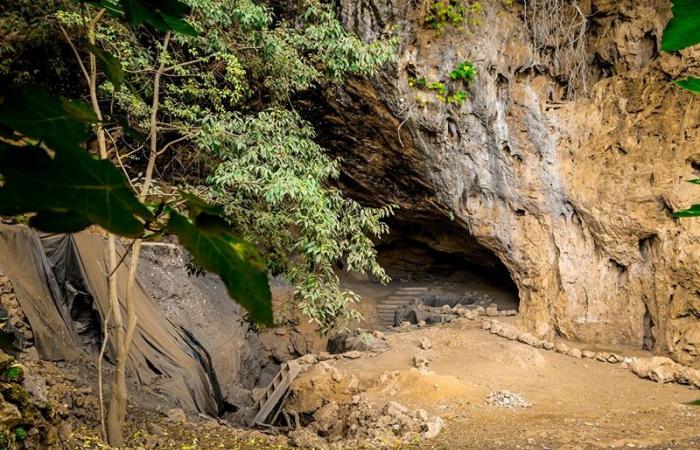Nestled in the mountains of Bni Snassen, the Cave of Pigeons, in the commune of Taforalt (or Tafoughalt), province of Berkane, has continued to seduce researchers in recent years with the archaeological and scientific treasures it conceals and the secrets it contains. she delivers little by little, the last of which was the discovery of the oldest medicinal use of plants in the world.
This unprecedented scientific and archaeological achievement, announced by an international team of researchers, attests that human groups of the time had precise knowledge of the healing properties of plants and their use to treat illnesses and relieve pain.
Researchers found in this cave, located about 23 km south of the town of Berkane and about 55 km northwest of the town of Oujda, evidence of the “medicinal” use of plants in levels archaeological dating back 15,000 years.
The plants discovered correspond to the species ”Ephedra”, whose fruits were unearthed in an area of the cave which was reserved for burials according to precise rites, very widespread among human groups of the time of the Stone Age and especially that between 22 thousand and 7 thousand years ago.
This unique discovery confirms Morocco’s place as one of the most important archaeological sites in the world and highlights the central role of the region in understanding human evolution, particularly in the context of the interaction between being human and its environment.
It also represents a significant advance for scientific research into the evolution of medical knowledge among ancient humans, by redefining the timetable for the use of plants in traditional treatments.
On a local level, this archaeological discovery will strengthen the position of Taforalt as a center of scientific research, cultural and archaeological tourism, thus opening promising prospects for sustainable development of the region. Just as it could support the local economy by attracting more tourists and researchers.
In a statement to MAP, Ismail Ziani, researcher at the University of Las Palmas in Spain and graduate of the National Institute of Archeology and Heritage Sciences (INSAP) in Rabat, stressed that this cave, which is one of the oldest archaeological sites in Morocco, experienced human occupation extending from 120 thousand to 12 thousand years ago, mainly linked to the Aterian and Iberomaurusian cultures of the Upper Paleolithic.
He explained that excavations at this site have revealed a series of important discoveries shedding light on the life and evolution of ancient communities, including the oldest use of symbolic jewelry and the oldest human burial of the Iberomaurusian culture dating back to approximately 15 thousand years old, making it one of the oldest tombs in the world.
The researcher considered the discovery of the earliest use of Ephedra for medical purposes, whether for anesthesia, stopping bleeding or relieving pain, to be proof of the knowledge that had these communities when it came to medicine, noting that Ephedra was particularly associated with burials, as its seeds were only found in burial areas.
He added that these findings confirm the use of plants by the ancient inhabitants of Taforalt for medicinal and subsistence purposes, relying largely on natural resources, such as acorns, pines and other plants for food. and heal yourself.
For his part, Hassan Talbi, professor at the Faculty of Sciences of the Mohammed Premier University of Oujda, explained that the Pigeon Cave in Taforalt, where this unprecedented discovery of the first medical use of herbs took place, already known other important archaeological discoveries, notably the oldest surgical operation in the world dating back 15,000 years, traces of which are still visible on a human skull.
According to him, studies showed that the wound healed, indicating that the person survived the operation and tolerated the pain thanks to the use of this type of plant.
The academic explained that the use of Ephedra by the ancient humans of Taforalt was not random, but demonstrated a good knowledge of its benefits and virtues, arguing that they had brought it to the cave and had used it in a specific place, namely the place of burial.
He noted that these studies, led by an international scientific team including researchers from Morocco, Great Britain, Germany and Spain, and which lasted several years, highlight the scientific capacities and advanced infrastructures of which places Morocco in the field of archaeological research, thus reflecting the rich heritage of the country and strengthening its position as a world historical center having contributed significantly to the evolution of humanity.
He considered that the discoveries made in the Pigeon Cave make it a site of great archaeological and scientific value on a global scale, with a particularity among archaeological sites, hence the need to combine efforts for its heritage listing. worldwide and this, as part of the promotion of this site, which has not yet revealed all its secrets, so that it becomes a destination for research, archaeological, scientific and cultural tourism.
Archaeological sites present enormous opportunities to promote cultural tourism and support local development, and investment in this heritage can open up promising prospects for sustainable development in the region, as a center of attraction for tourism enthusiasts. cultural, scientific and archaeological.






